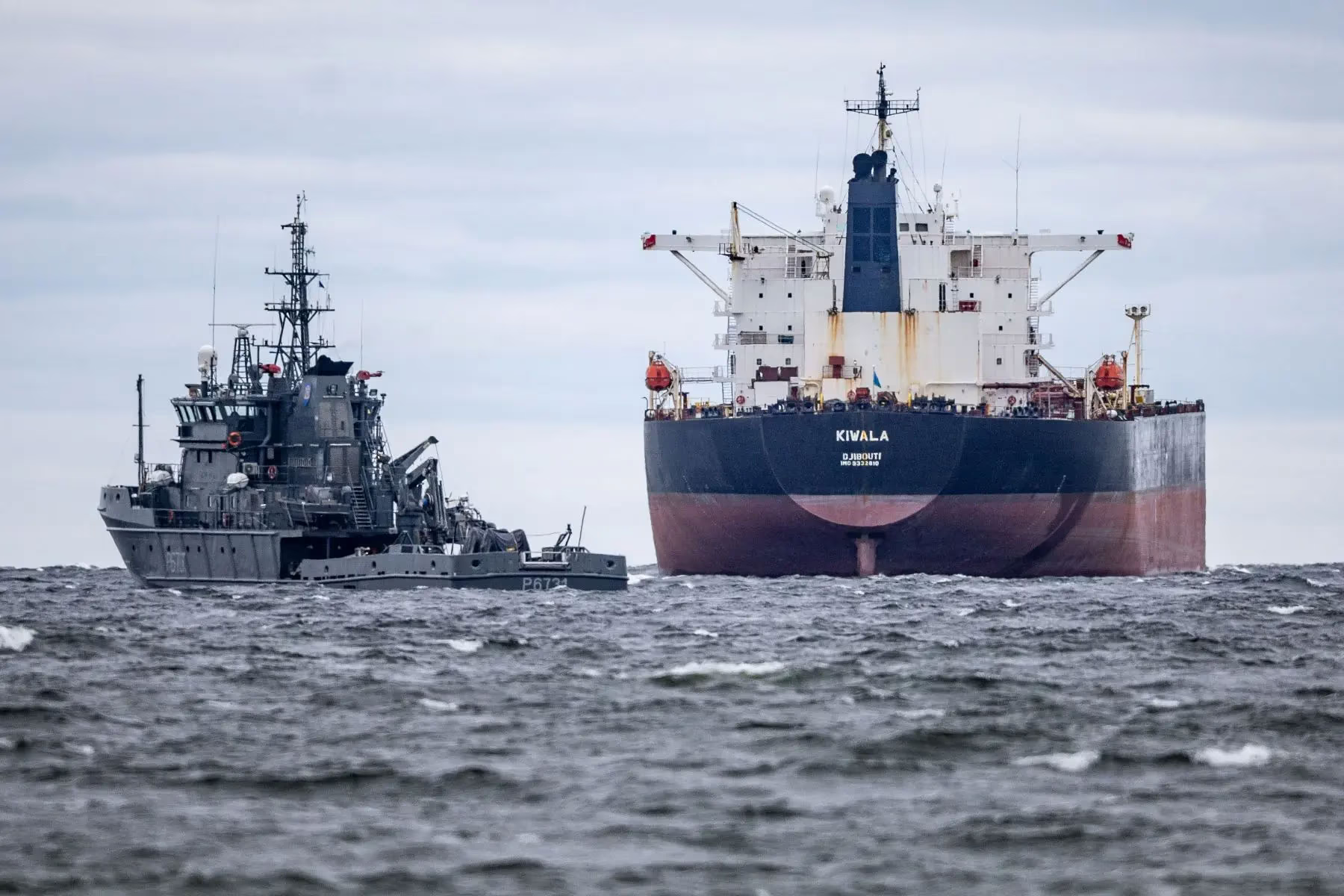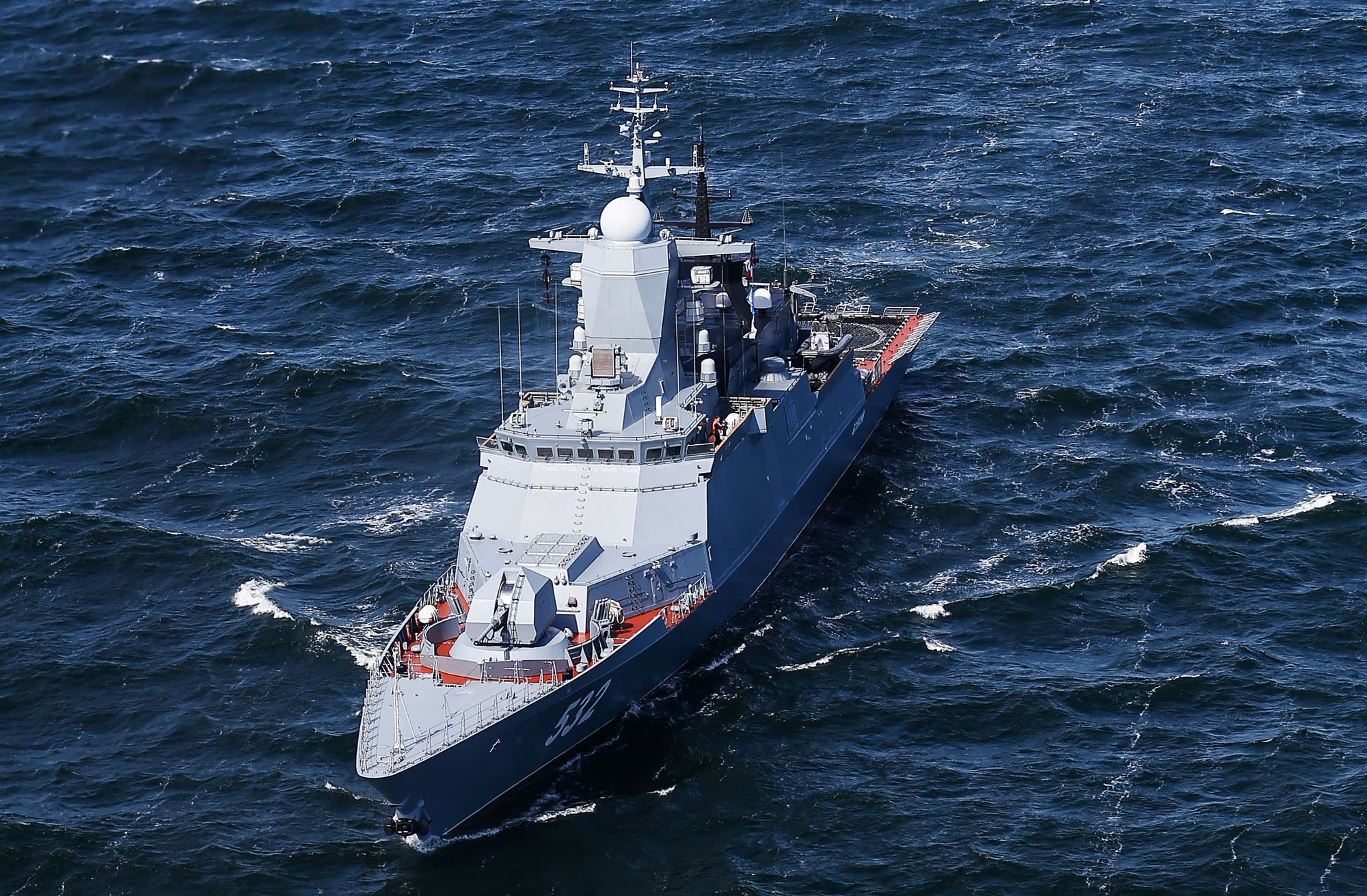Russia's "shadow fleet" has long been an entrenched yet vexing feature of Europe’s sanctions landscape—a network of aging tankers that continues to earn the Kremlin billions despite mounting external pressure. Back in May, Brussels took note of an incident in which a Russian Su-35 fighter jet escorted one such vessel in an attempt to block an inspection by Estonia. The EU was left facing a familiar dilemma: escalate the pressure or yet again resort to expressions of concern. At the same time, Moscow continues to exploit the Black Sea as a stage for managed confrontation—blocking Ukrainian ports and raising the stakes in negotiations with the West.
A new report now confirms the first documented case of sanctioned tankers being escorted not by fighter jets, but by Russian naval vessels in European waters. The latest episode underscores a broader trend—Moscow is testing the limits, while Europe still searches for a response.
The first documented case of Russian naval vessels escorting sanctioned tankers in European waters was reported to All Exclusive by maritime situational awareness analyst Mark Douglas, who works at the New Zealand-based firm Starboard Maritime Intelligence Ltd. This marks the first time it has been observed that the Russian Navy is openly protecting the "shadow fleet" — a network of vessels used to circumvent sanctions — with military force.
According to Douglas, data from Automatic Identification Systems (AIS) indicate coordinated movements of three vessels starting on June 16. Two tankers linked to the shadow fleet, along with a Russian warship, simultaneously entered the English Channel en route to Russian ports to load oil. The escort included the corvette Boykiy, part of the Steregushchiy-class, as well as two tankers: SELVA (previously known as NOSTOS and NAXOS), which is sanctioned by the United Kingdom, and SIERRA ("Suvorovsky Prospekt"), which is subject to restrictions by both the UK and the European Union.
The SELVA tanker initially identified itself as sailing under the Panamanian flag, but following the publication of the report, it was revealed that the vessel had apparently reflagged and is now registered in Palau. This was confirmed by data from S&P Global.
Finland’s defence minister had previously warned about the possibility of such military escorts, calling the practice unprecedented. Now, as Mark Douglas notes, those concerns appear to be justified: following increased inspections by Estonia and tighter enforcement by EU countries, Russia seems to have shifted to openly deploying naval vessels to accompany its shadow fleet.
The vessels’ movements were first identified by OSINT researchers on the social network Bluesky, including analyst Kristian Panton. The firm Starboard Maritime Intelligence continues to monitor the routes and behaviour of the tankers, documenting shifts in their activity. According to Douglas, this episode serves as a test of the international community’s readiness for potential escalation — and of its practical ability to enforce the sanctions regime.
Several days ago, it emerged that the tanker Marathon (formerly known as Udaya), which is part of the shadow fleet, had departed from the Russian port of Primorsk. It is currently located within Germany’s exclusive economic zone and is heading towards the Great Belt Strait, which lies within Denmark’s EEZ. According to Denmark’s maritime authority, the vessel’s crew was contacted but reportedly "misled" the authorities.
Earlier, on 14 May, an incident occurred in the Gulf of Finland involving the civilian vessel JAGUAR, sailing under the flag of Gabon, and the Estonian Navy. Reports indicated that Estonian forces attempted twice to deploy a boarding team from a helicopter, but the ship’s crew disrupted both attempts by altering course and continued towards the port of Primorsk. Russian pro-government Telegram channels claimed that a Su-35 fighter jet was dispatched to assist the vessel, escorting it until it entered Russian territorial waters.
What Are You Gonna Do About It?

Russia Covers Its Shadow Fleet With Military Aircraft
Does Brussels Have Any Real Tools to Respond—Or Will It Once Again Resort to Rhetorical Concern?

Managed Chaos in the Black Sea
How Russia Is Using the Blockade of Ukrainian Ports as a Political Bargaining Chip

Is Russia Preparing for the Next War?
The Expansion of Military Infrastructure Near Finland, Estonia, and Norway Raises Concerns of a Looming Conflict

A New Border, Old Threats
Moscow Increases Military Presence Near Finland, as Helsinki Responds With Its Biggest Rearmament Since the Cold War

Five Russian Bases Near Sweden’s Border Undergoing Upgrades
Each Could Host Nuclear Weapons

